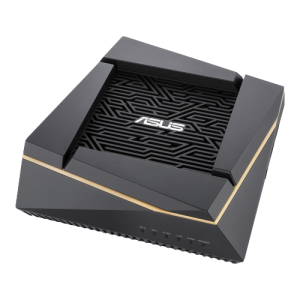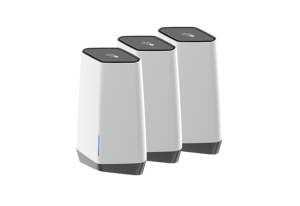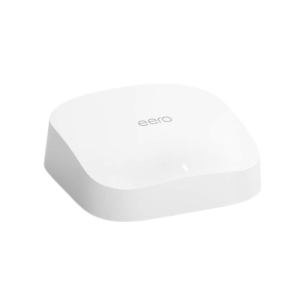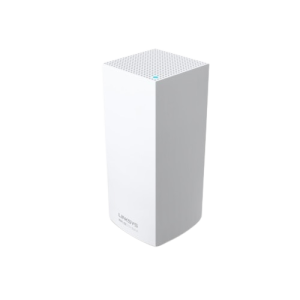
Are you wondering how to improve your Wi-Fi network’s coverage and eliminate dead zones in your home or business?
In today’s connected world, a strong and reliable Wi-Fi network is essential for seamless internet connectivity. However, many homes suffer from Wi-Fi dead zones, weak signals, and slow speeds. This is where Wi-Fi mesh systems save the day. Today you will discover the key aspects of comparing Wi-Fi mesh systems, helping you find the right fit for your home or business network needs.
So, what is Mesh Wi-Fi? Have you ever experienced dropped Wi-Fi signals, lag, or complete dead zones in certain areas of your home or business? Even with the strongest Wi-Fi service. The challenge of extending broadband services to large spaces is often the greatest. So, what is the best way to do so? Three words, “mesh”, “Wi-Fi” “systems”. These systems can extend your internet range and keep you connected, whether you’re gardening in the backyard or busy in your workshop.
A mesh Wi-Fi system connects multiple Wi-Fi access points in your home or office, expanding the network coverage. It effectively eliminates dead zones and ensures a seamless internet experience.
Benefits:
One of the primary benefits of a mesh Wi-Fi system is the elimination of dead zones. With multiple nodes working together, you can count on a reliable connection and a strong signal throughout your space. Getting a few Wi-Fi bars on your devices does not require standing in one specific part of the room. Boost your Wi-Fi signal with a mesh router system.
Mesh systems provide a streamlined Wi-Fi connection, minimising lag times whether you’re stationary or on the move. You can move from the living room to the opposite end of the house without experiencing any signal delay or unstable network connection. Mesh routers ensure seamless roaming capabilities, allowing you to stay connected as you move from one networked node to another.
Lastly, mesh Wi-Fi setups offer user-friendly network management. Most mesh networks provide easy access through mobile apps, allowing you to check internet speeds, set up guest networks, test connection quality between nodes, and more.
How Much Does Mesh WiFi Cost?
When considering the cost of a mesh WiFi system, it’s essential to assess its importance to you and the potential consequences of getting it wrong. WiFi connectivity has become increasingly crucial in our daily lives, and its impact extends beyond mere convenience. For instance, a study conducted by BT revealed that 52% of people are deterred from living in or buying a house with WiFi black spots, highlighting the potential loss of property value associated with inadequate coverage.
To determine cost factors, it’s worthwhile to evaluate your specific WiFi needs. Consider whether you require wireless connectivity in every room, office, or workspace within your premises. Additionally, assess the number of simultaneous connections you anticipate supporting.
- Understanding your usage requirements is crucial. Will you primarily use the WiFi to stream video content, such as films and TV programmes, or engage in activities that involve downloading and uploading large files?
- Perhaps you require the capability to conduct video conferences seamlessly.
- Furthermore, consider whether you need to segregate your network, such as having separate guest and staff WiFi networks.
Answering these questions will help guide you towards determining the type of WiFi system that will work best for your specific needs, and in turn, influence the associated cost. By assessing your requirements, you can strike a balance between the features and performance you desire and the affordability of the mesh WiFi system. It’s important to invest in a solution that not only meets your current needs but also accommodates potential future expansions or upgrades, ensuring a long-term return on your investment.
Common Problems Associated with Mesh Wi-Fi Systems:
While Wi-Fi mesh systems offer numerous benefits, it’s important to consider their potential drawbacks before making a decision:
- Cost: The primary drawback of Wi-Fi mesh systems is the cost. Compared to traditional Wi-Fi setups or range extenders, mesh router systems can be more expensive. The investment in multiple nodes or access points can add up, especially if you have a large space to cover. However, many users argue that the long-term benefits and improved coverage make the cost worthwhile.
- Additional Equipment: Expanding your Wi-Fi signal with a mesh system often requires adding more equipment to your network. While this enhances coverage, it can also result in more physical devices to install and manage. Some users may find the process of setting up and configuring multiple nodes to be more complex compared to a single router setup.
- Discreet Router Placement: With traditional routers, you could strategically place them in discreet locations to optimise signal coverage. However, with mesh systems, the nodes need to be strategically positioned to create an effective mesh network. This may result in less flexibility in router placement, as nodes need to be strategically distributed throughout the space for optimal coverage.
- Security Concerns: While mesh Wi-Fi systems generally offer robust security features, it’s important to ensure that the system you choose includes the necessary security protocols to protect your network and data. Be sure to check for automatic firmware updates, encryption options, and features that allow you to monitor and control network access.
Although Wi-Fi mesh systems have some cons, many users find that they outweigh them. In larger homes or offices, they provide reliable coverage, eliminate dead zones, and enhance roaming capabilities.
Mesh WiFi Comparisons:
Ruckus Wireless: Ruckus Wireless is a trusted industry leader providing reliable wireless network solutions. Their robust and highly customizable mesh Wi-Fi systems offer excellent coverage, rock-solid connectivity, and an easy-to-use management app. With options for both indoor and outdoor networks, Ruckus Wireless is a popular choice for various settings.
Asus AiMesh AX6100 Wi-Fi System: This tri-band Wi-Fi 6 mesh system delivers exceptional wireless speeds and extensive coverage. It supports a large number of devices concurrently and offers ample Ethernet ports. With its AiMesh compatibility, you can easily combine different Asus routers to create a seamless home Wi-Fi network.

Netgear Orbi Pro Wi-Fi 6 Mini: Designed for small businesses and remote workers, this dual-band Wi-Fi 6 mesh system provides decent coverage and supports up to 40 devices concurrently. It offers great flexibility with its ability to create separate networks for different user groups and provides robust performance at an affordable price point.

Amazon eero 6+ Mesh Wi-Fi System: This affordable Wi-Fi 6 mesh system offers good coverage and utilises Amazon’s TrueMesh technology to optimise signal strength and minimise dead zones. With its built-in smart hub, it provides additional connectivity options and is a solid choice for users seeking reliable Wi-Fi coverage on a budget.

Linksys Atlas Max 6E: This tri-band Wi-Fi 6E mesh system excels in coverage range, delivering exceptional speeds and supporting a large number of device connections. Its professional-grade features make it suitable for larger spaces, such as office buildings or venues requiring extensive Wi-Fi coverage.

Recommendations:
Among our preferred brands at EAV, the Ruckus is one of our preferred brands. We only work with brands that have gained the trust of our customers. “The Ruckus Wireless Zoneflex R510 Unleashed are solid Access Points with great range,” raves Julian M. in his 5-star review. He further emphasises, “I highly recommend the product.” Julian shares his experience of installing these access points in a very large home with previously terrible reception. To his delight, the Ruckus Wireless Zoneflex R510’s exceeded his expectations, providing exceptional coverage and performance.
The Best Wireless Mesh WiFi System:
Ruckus Wireless offers wireless network solutions for a wide range of organisations and public spaces worldwide. With a strong emphasis on providing dependable and safe wireless capabilities, Ruckus Wireless is trusted by venues, hospitals, hotels, and many homeowners. Whether it’s indoor or outdoor coverage, Ruckus empowers users to design and create wireless networks that ensure consistent access for everyone.
The company offers excellent options for outdoor wireless networks, with powerful and durable access points that can be easily disguised for enhanced network security. One of the standout features of Ruckus technology is its ability to automatically change frequencies to overcome wireless interference, ensuring uninterrupted connectivity.
We love that users also have the flexibility to block outside access points and signals, creating a secure and exclusive network environment. Security is key for us at EAV! Leveraging the latest Wi-Fi 6 technology, Ruckus delivers greater speed, continuity, and control over network traffic. The ability to allocate bandwidth based on user status and prioritise network access further enhances the user experience. In our professional opinion its reliability and extensive coverage, forefronts Ruckus Wireless as the industry leader, providing seamless connectivity and exceptional performance.
Set Up Guide For Ruckus:
Setting up Ruckus Unleashed involves a series of steps:
- Connect to the “Configure.me” SSID through the wireless network settings and access “unleash.ruckuswireless.com” in Internet Explorer, despite any security warnings.
- During setup, you’ll be prompted to choose your language, country, and enable mesh functionality if desired. IP settings can be configured using DHCP or manually assigning IP addresses.
- Specify your wireless LAN name (SSID) and determine the WPA2 encryption settings to ensure secure connectivity.
- Set up administrator credentials, including a username and password, and enable password recovery by providing a security email address and question-answer pair for easy login retrieval.
- Review all the settings and click “Finish” to initiate a network restart. Confirm the restart and wait for the access point to reboot.
Once the access point is back online, you can log back into the setup page. Subsequent access points will automatically join the Unleashed network on the same subnet, obtaining their configuration from the Unleashed master access point. After reconnecting to the newly configured SSID, you can authorise and log back into “unleash.ruckuswireless.com” using your credentials.
During the registration prompt, you have the option to register, but it is not mandatory. You can skip the registration process if desired. Finally, you can add more Wi-Fi nodes and create additional SSIDs if needed.
In summary, the process to set up Ruckus Unleashed involves connecting to the “Configure.me” SSID, accessing “unleash.ruckuswireless.com,” selecting language and country, configuring IP settings, specifying wireless LAN name and encryption, setting up administrator credentials and password recovery, reviewing settings, restarting the network, reconnecting to the new SSID, authorising, logging in, optionally registering, and adding more Wi-Fi nodes and SSIDs.
Conclusion:
Comparing Wi-Fi mesh systems is a crucial step in finding the perfect fit for your home network needs. By considering factors such as cost, problems, comparisons, reviews, and best options, you can make an informed decision that ensures a strong and reliable Wi-Fi network throughout your home.
Cost should be evaluated in the context of the importance of Wi-Fi to you and the potential consequences of inadequate coverage. Understanding your specific usage requirements, such as streaming, downloading/uploading large files, and conducting video conferences, will help determine the type of system that best suits your needs and influences the cost.
Analysing comparisons between different mesh systems allows you to assess their features, performance, range, and ease of setup. Real user reviews provide valuable insights and help gauge the reliability and satisfaction of each option. Identifying the best systems and their standout features enables you to narrow down your choices and find the most suitable solution. Mesh systems link multiple access points or nodes together, expanding the internet coverage and ensuring a reliable connection throughout your home.
In summary, by following this comprehensive breakdown, you can compare Wi-Fi mesh systems effectively and find the perfect fit for your home. Evaluating the cost, addressing common Wi-Fi problems, analysing different options, considering customer reviews, identifying the best systems, understanding the technology, and providing practical setup guidance will empower you to transform your home network into a seamless, reliable, and high-performing Wi-Fi experience. Invest in a mesh system that meets your needs, provides long-term value, and ensures a strong and dependable Wi-Fi network for all your online activities.
In summary, by following this comprehensive breakdown, you can compare Wi-Fi mesh systems effectively and find the perfect fit for your home. Evaluating the cost, addressing common Wi-Fi problems, analysing different options, considering customer reviews, identifying the best systems, understanding the technology, and providing practical setup guidance will empower you to transform your home network into a seamless, reliable, and high-performing Wi-Fi experience. Invest in a mesh system that meets your needs, provides long-term value, and ensures a strong and dependable Wi-Fi network for all your online activities.

